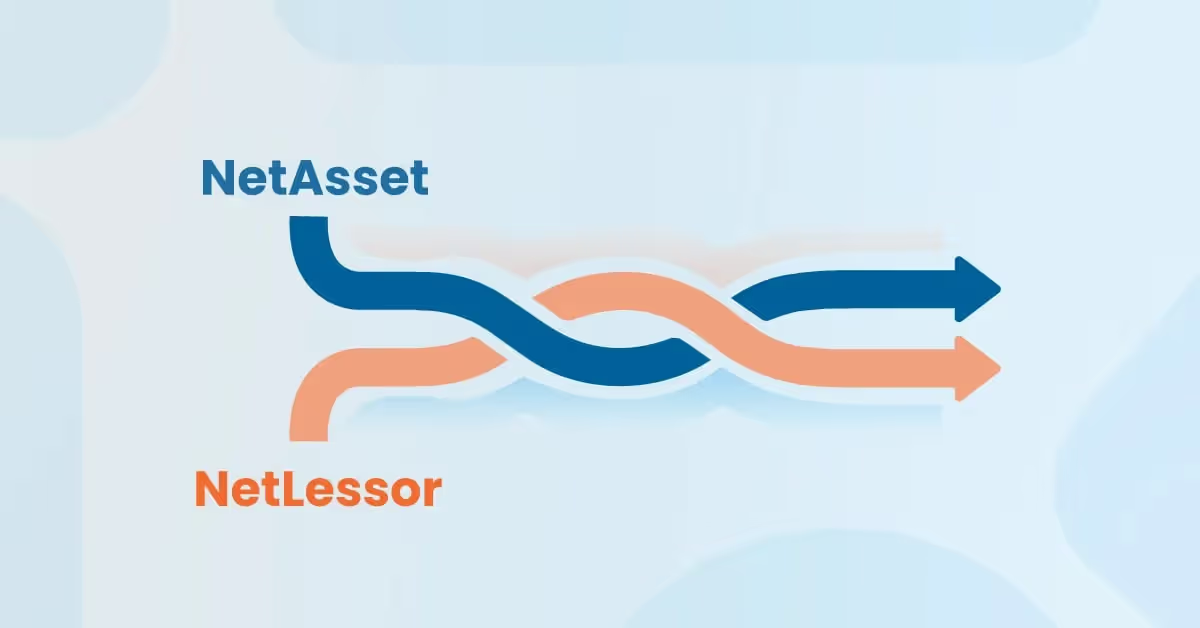There’s no getting around it: if you are in the business of leasing assets, you also need to manage those assets. With that said, there are many advantages to tracking both the leases and the assets within the same system, namely:
- Connected records
- Automated functions
- Ease of use within similar reporting and system functionalities
First, let's take a look at our lease accounting product, NetLessor compared to our asset accounting product, NetAsset:
Why use asset accounting and lease accounting together?
When you use NetLessor and NetAsset together, they build on each other's strengths.
1. Connecting records
Within each respective lease, you can easily see which asset is linked to the lease record and vice versa. When referencing one, there will be an embedded hyperlink, so all it takes is the click of a button to reach the other. This transparency may also be helpful in a scenario where leases and assets do not have a one-to-one relationship.
For example, a building owner might lease out their building by floor. In this case, one individual building or asset, would be connected to multiple leases seen within the asset record. The same would be true for a lease that encapsulated multiple assets.
For review and traceability, these links offer valuable transparency.
2. Enhanced reporting
Using native NetSuite functions allows you to pull from both products simultaneously. Because assets can be linked to leases and vice versa, reports can be pulled based on these factors.
For example, a company in the business of leasing out trucks would be able to run a report to pull all assets within NetAsset that are not currently connected to a lease in NetLessor.
This capability eliminates the need for comparison reports.
3. The functions of NetAsset and NetLessor are inherently similar
Both are located within NetSuite, offering familiar functionality, and the product layouts are nearly identical. Training on new systems can be confusing and costly. Keeping your lease and asset management within one platform offers simplicity.
For example, once you’ve trained your staff on NetLessor, they will find the layout of NetAsset so similar that they will be able to operate within the new product quickly.
How our customers use NetAsset and NetLessor together
Customers use these functions together because they have similar purposes and connect easily. One customer uses the inherent NetSuite functionality of saved searches to run profitability reports on each leased asset. Others use them together simply to connect records and have the capability to run reports that verify this connection or to be able to filter these reports based on location.
Bottom line
Each product is extremely valuable on its own. Accounting for assets and leases using Netgain tools makes accounting easier and more accurate. Companies that solely own assets will benefit immensely from the capabilities provided by NetAsset. And companies that act as the lessor will benefit from both NetAsset and NetLessor in terms of automation, connection and visibility—just to name a few.




.avif)
